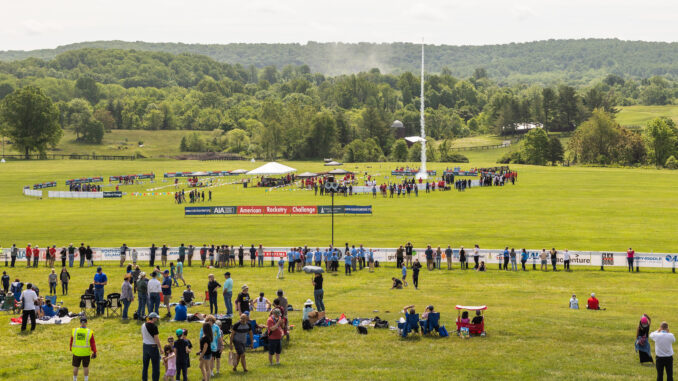
Rocketing to New Heights
By Bill Kent
It starts with the woosh. You imagine it while designing the rocket. You ask yourself what blast-off will sound like as you gather the parts, glue the rocket together and paint it.
You think about it on the 40-minute drive southwest from Ashburn to Great Meadow, a vast, 174-acre Fauquier County field where steeplechases and polo matches play out – except on the one Saturday a month when, weather permitting, rocket kids from all over Northern Virginia gather to send their dreams into the sky.
Isaac Bolden, an Independence High School junior, knows that whooshing sound well. “It was loud the first time I heard it,” he said.
Bolden started building rockets when he saw internet clips of them blasting off, but it wasn’t until he experienced a blast-off for the first time that he felt the rush. “It got to me,” he recalled. “It was like nothing I’d ever heard or seen. This was the real thing.”
Bolden is one of 20 members of the Brambleton high school’s Rocketry club, which is providing them with technical skills, life lessons, a view into the future – and occasional thrills as well.
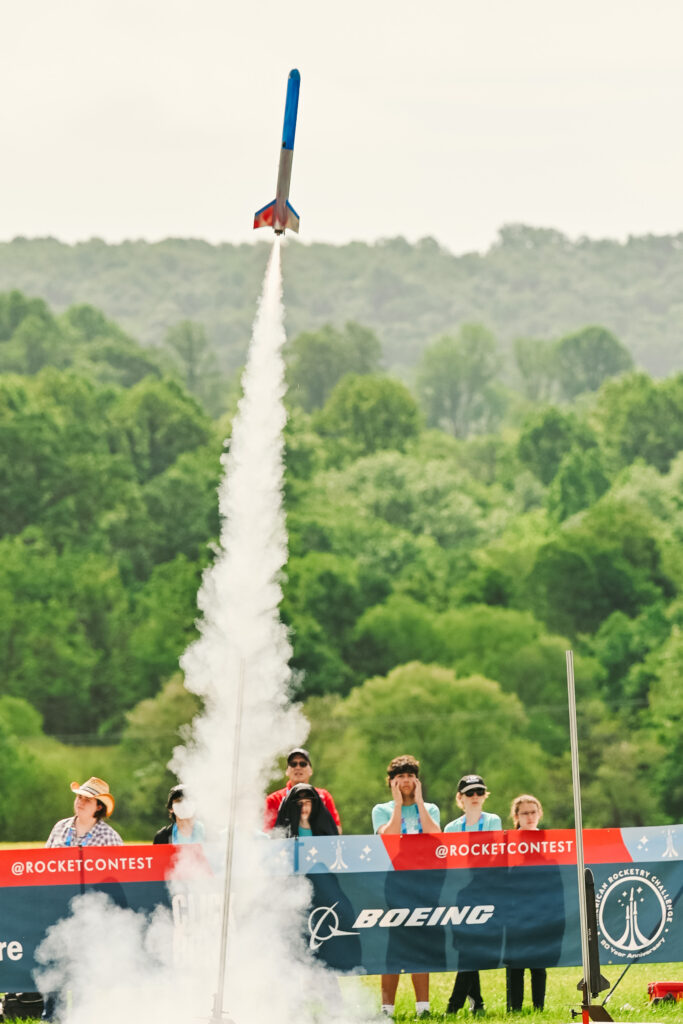
COUNTDOWN
The club team captain at Independence is Sarah Kravitz. A sophomore who aspires to be a woodworker, novelist and filmmaker, Kravitz’s major concerns were the fins she had painstakingly cut, sanded, sealed and painted that guided the rocket perfectly toward the heavens.
She never forgot the moment the tiny “space craft” became a dot in the sky. Then its parachute popped out, unfurling like a brightly colored umbrella, and, fortunately for Kravitz and her rocket club team, the rocket avoided the trees and landed in a bush.
For Suhani Dondapati, in her first year at Independence, the rocketry club was life-changing. “I realized this was something I really wanted to do,” she said. “I really want to be an aerospace engineer. I’m applying to Virginia Tech. I want to do the hands-on work that’s going to take me into space.”
If this happens, she won’t be the first rocketry student to leave the earth’s atmosphere. In March 2023, mission pilot Warren Hoburg – who built rockets while attending North Allegheny High School in Pennsylvania – flew a SpaceX rocket to the International Space Station.
Kevin Jones, an aerospace teacher and faculty advisor for the Independence Rocketry club, says he hopes Dondapati makes it. “Rocketry has a way of making things happen, of showing that the goals can be possible.”
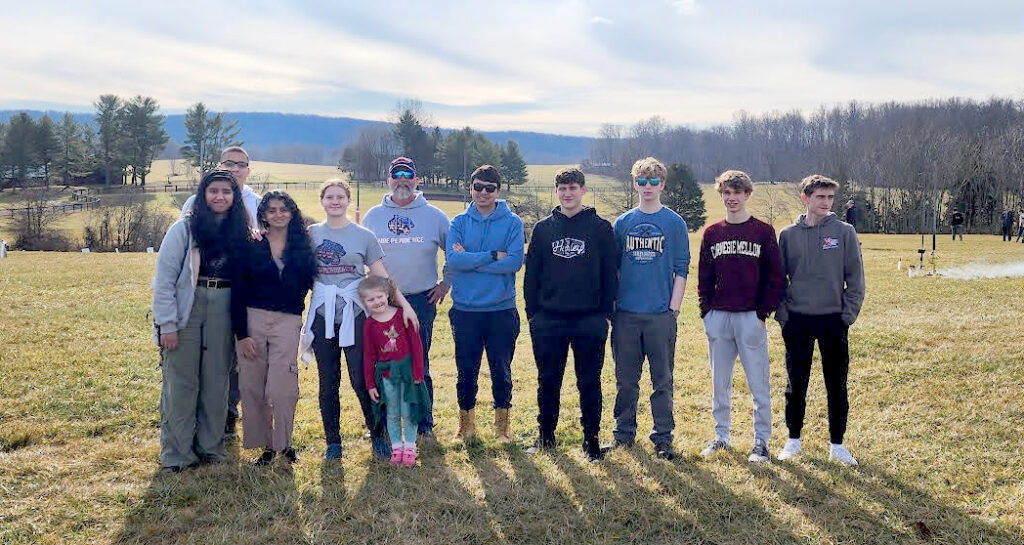
PAST TO FUTURE
Craig Beyers is a retired software engineer now living in Ashburn’s Ashby Ponds community with his wife, Samantha. Beyers has seen many changes in rocketry in the half-century since he heard his first woosh.
“The materials have improved from the days of cardboard tubes and balsa wood fins. The kids now have 3-D printers that can reproduce fins and nose cones that are stronger and lighter than anything I could do,” Beyers said. “And there is more you can do with payloads. You can put a camera in the rocket and see the entire flight live, as if you were in the rocket.”
But between the many “no-fly” air spaces surrounding the District of Columbia as well as the aircraft approaches to Dulles Airport and the amount of development in eastern Loudoun Country — there weren’t many places where launching rockets was allowed.
So, 20 years ago, Beyers joined other regional rocketry grown-ups in forming NOVAAR, the Northern Virginia Association of Rocketry. They helped get launching privileges at Great Meadow and, in 2003, established the American Rocketry Challenge, a national competition that brings together the 100 top qualifying high school rocket teams.
The event also involves a case of US Grade A Large chicken eggs.
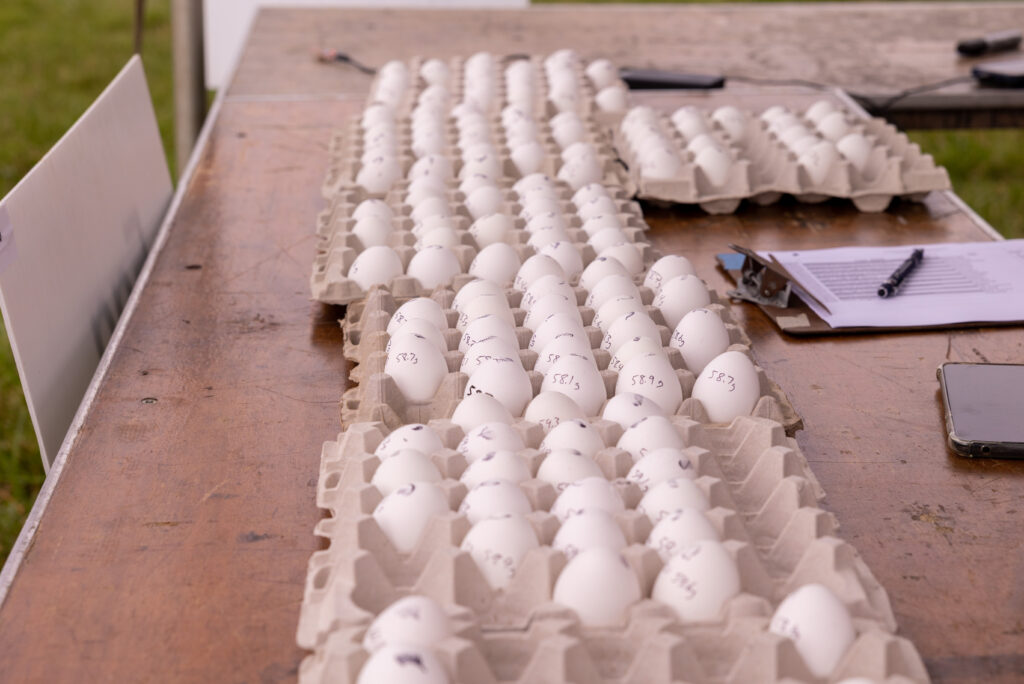
COMPETITION
In the early 1960s, when America’s space program was trying to send a human being into space and bring them back safely, the National Association of Rocketry (currently based in Middletown, Va.) established the “egg loft” competition. The goal is to shoot as many as three eggs in a single rocket to a reasonably impressive altitude and have everything survive the return to earth intact.
Independence team member Isaac Bolden cannot describe his disappointment after finding “a tiny crack,” in the single egg the Independence team launched a few months ago. “We did another launch that was perfect. If we can do a few more launches where nothing breaks, we can qualify for ARC.”
This year’s American Rocketry Challenge takes place at Great Meadow in May. High school teams from around the country and even American military bases abroad will gather and load their rockets’ payload compartments with eggs. The kids will vie for more than $100,000 in cash prizes, as well as the chance to represent the United States in rocketry at the Paris Air Show later this year.
Representatives of colleges with rocket clubs, as well as local and regional aerospace industries, will also attend the competition.
“Some of them are sponsors,” Beyers said. “Others just want to see what the kids have done, and maybe ask them what kind of educational or employment opportunities some of them see in their future.”
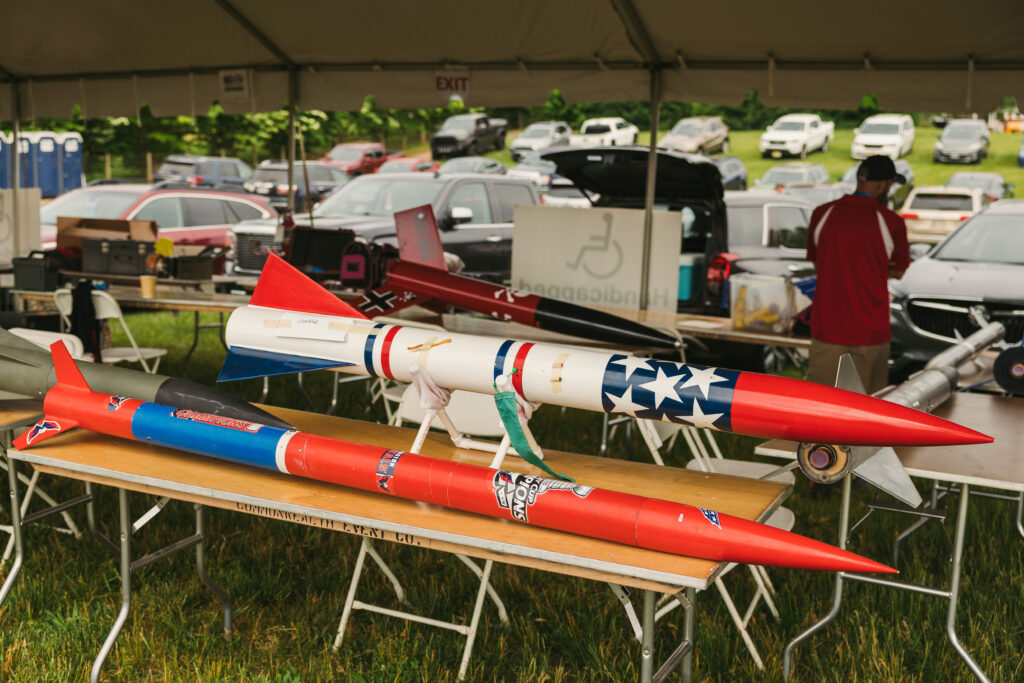
Kevin Jones, who is looking for a sponsor for the Independence club, would be delighted, but not surprised, if Independence qualifies for ARC. “These are good kids. They’ve certainly worked hard and deserve recognition for what they’ve done.”
If Independence wins, Suhani Dondapati predicts a celebration with pizza and doughnuts. If they don’t: “You keep going. You move on.”
Move on – and up. For the Independence Rocketry team, the sky is no longer the limit.
Bill Kent is a prolific writer and author whose articles have appeared in The New York Times, the Philadelphia Inquirer, Kirkus Reviews and elsewhere.
